Error Catch Rates: Why Perfection Isn’t Possible
You’ve seen those comments: indie authors publishing a professionally edited book only for readers to point out mistakes they’ve found. Or typos in traditionally edited books used as justification for not hiring professional editors. In what I’m sure is a response to this chatter, recently I’ve come across several posts from editors on social media promising that their editing can make an author’s manuscript “perfect.” Sorry to say, that’s misleading. Here are science-based factors behind error catch rates in editing and why an error-free manuscript isn’t possible.
Error catch rates in editing: a realistic percentage
First, and this can’t be repeated enough, when it comes to editing written text and error rates in editing, there is no such thing as perfection.
I’ll say it again, louder for those in the back: THERE IS NO SUCH THING AS PERFECTION.
A study by Dr. Ray Panko of the University of Hawaii of experiments measuring human error in proofreading found that professional proofreaders, those who correct errors for a living, caught on average 81% of nonword errors and 66% of word errors in lab-based proofreading experiments. (Nonword errors are things like numbers, or spacing issues, or punctuation. Word errors are, well, word mistakes like wrong word choice or transposed letters.) The highest percentage catch rate of all the studies—meaning the highest percentage that can be humanly expected in a lab setting—was 95%.
Considering that a catch rate can be defined as number of errors corrected / total number of errors in the document, to put it another way: if you send a manuscript with 3,000 errors in it to a professional editor, the best you can expect, based on scientific studies of editors in a lab-based, controlled environment, is to receive your manuscript back with 150 of those errors still lurking within.
Editing doesn’t happen in a perfect world
But editors don’t edit in a controlled, lab-based environment. They edit in the real world, on real manuscripts, authored by real humans. They themselves are humans, and many factors specific to being human and the nature of publishing a book affect that 95% catch rate.
Manuscript quality
The worse shape the manuscript is in, the more errors will be left behind. Take the example above of the manuscript with 3,000 errors. If the story had twice that many errors in it, the catch rate would drop exponentially, because the more mistakes an editor has to correct the more opportunity there might be for them to miss something, a phenomena called “correction fatigue.”
Number of rounds
A traditional publisher sends a book through two to three rounds of technical editing, at the least: copyediting, proofreading, and sometimes cold reading (when a separate individual reads the edited and proofread book with fresh eyes). And yet, mistakes still end up in published books, as reported exhaustively by authors on social media.
The more editing rounds a book goes through, the more people (or passes by the same person) have the potential to find and correct errors. If indie authors are only able (or willing) to secure one round of technical editing by a professional, it stands to reason a higher percentage of mistakes will be left behind.
Length of deadline
A tight deadline for a round of editing will result in a poorer quality edit. Full stop. Editing is a very brain-power-intensive task. Most experienced professionals will only be able to devote a few hours a day to the focused concentration editing requires. (My limit is somewhere around four to six hours before my brain cries uncle.) An unrealistic deadline means more hours must be devoted to editing, which results in more errors missed.
Editor experience/training
Editing has a growth curve just like any professional practice. As editors grow and gain hands-on experience, they learn more skills and knowledge that make them a better editor. Things like proper hyphenation of the word “off-balance” (Merriam-Webster’s dictionary says put that hyphen in there), or what brand names are trademarks (LEGOS, you wily toy name). That muscle memory comes from looking up things encountered in manuscripts over and over and over. Just starting out, an editor might not know to look up something like that in the first place, and a mistake slips by.
How much training an editor has, especially in the style guides used by publishers and preferred by indie authors, comes into play here as well (see more about style below). An editor who hasn’t received training on The Chicago Manual of Style or AP style might not know when an error is an error according to the style guide in question.
“Errors” can also be a matter of style
Let’s talk for a minute about online reviews of published books and how they factor into this conversation.
I’ve seen many an author bemoan a review of their book that mentions “multiple errors,” or readers complaining about buying a published book “riddled with mistakes.” These authors and/or readers sometimes point to a book’s editor as the perpetrator of these literary crimes, and what ensues is usually a blanket pile on of folks criticizing the editor’s and/or author’s professionalism.
I want to ask every single one of those armchair critics: What qualifies you to judge what you find in a book as a mistake? What training in editing do you have beyond learning grammar in high school? (Knowledge that is probably very out of date thanks to the natural shift of language and its use over the years.)
Authors (and book editors) should probably keep top of mind that readers more than likely have no idea what they’re talking about when they criticize grammar and spelling.
It’s also very common that readers mistake style choices, such as specific lowercasing or capitalization recommendations from The Chicago Manual of Style, for example, for errors. They’re not. They’re just different, but still acceptable and correct, ways of styling language.
Here’s another example, just to drive the point home. One common complaint in reviews that I find particularly hilarious is when a reader goes on a tear about horrible spelling mistakes all over a book—a book that uses British spellings, which are perfectly correct to the vast majority of the English-speaking world.
So taking all of that into account, suddenly a professional editor’s potential best catch rate of 95% looks much better, doesn’t it?
Where the editor’s responsibility ends
Finally, I want to mention one more crucial misperception of error catch rates. Indie authors are usually responsible for accepting or rejecting their editor’s suggestions. Once the manuscript is out of the editor’s hands, he or she has no more responsibility for errors that might be reintroduced or new ones made during that process. So maybe that silly typo an editor caught, flagged, and corrected crept back in through no fault of theirs. It happens, and more than you might realize.
So if you come across those reviews that gleefully point out errors in an edited book, or see an editor promising perfection, please remember that perfection isn’t possible. Errors often remain even in the best edited books, even in books reviewed multiple times by multiple people.
Let’s all just give each other a little grace, perhaps. To err is human, after all.




